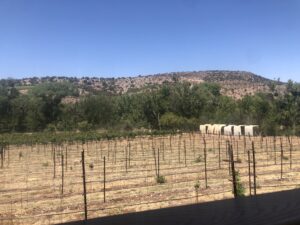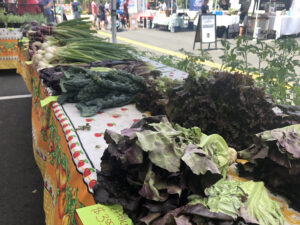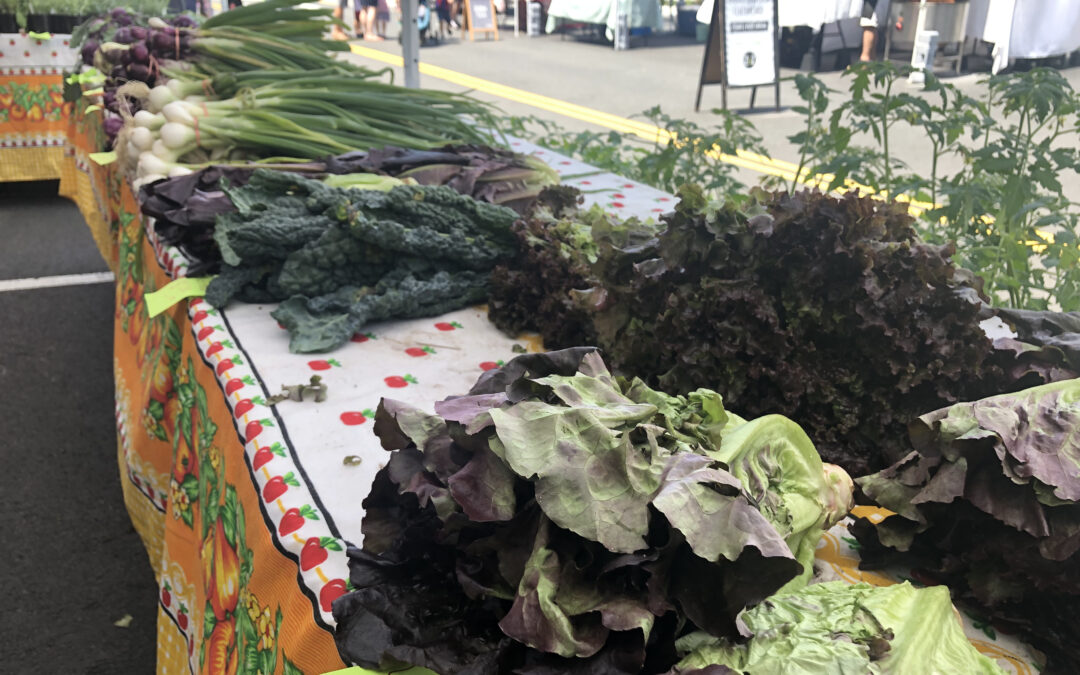What does it means to know where our food comes from. In this post we explore the benefits of food sourcing as it relates to choosing locally-grown foods, and consider the nutritional, economic, and environmental impact of knowing our food sources.
In autumn we may find ourselves celebrating the season with visits to a pumpkin patch, an orchard, or a nearby farm to purchase recently harvested pumpkins, squash, or homemade goods. Possibly even busy planning an elaborate holiday meal to share with friends and family. While some of the ingredients we need to plan a traditional holiday meal can be found in our local communities, others may travel from miles away.
In this blog post, Audrey will delve into what it means to know from where our food comes. She will explore the benefits of food sourcing as it relates to choosing locally-grown foods, and consider the nutritional, economic, and environmental impact of knowing our food sources.
Conscious Eating and Sourcing Food
Knowledge of where our food comes from gives us an opportunity to make mindful choices around the food we consume. By knowing the origin of our foods, we can further practice conscious eating. Part of this practice includes understanding the stages before our food ends up on our plates (1). In a previous blog post, we discussed the benefits of eating seasonally. However, unlike seasonal eating, sourcing food goes beyond what is available in that season, and considers how it is grown and transported to our grocery stores or farmer’s market stands (2). As a result, we can better understand how our food affects us and our communities.
Where Does Our Food Come From?
By the time food reaches our plates, we have little insight into its origins. Foods we eat everyday may come from gardens in our backyards or from farms in countries miles away (3). As a result of the global food supply system, we find that grocery stores are filled with a variety of produce, meat, and dairy options. With food from all over the world, it’s challenging to know exactly where our food comes. However, once we are able to better understand the source of our food, we can have more insight into how it was made and choose the foods that benefit our local economies and the environment (4).
Understanding How Our Food is Grown
By learning about the source of our food, we can also understand how fruits and vegetables are grown, or how the meats we consume are raised. For example, if we choose to purchase foods from local farms, we can develop relationships with those farmers and gain insight into the practices used to grow the foods we purchase (5). 
If we can’t purchase food locally, we can also look at food labels to understand how food was grown. Labels such as “organic” can indicate the types of practices used to grow or raise food. Farmers who produce organic fruits and vegetables abide by strict standards in which produce is grown without the use of certain pesticides or fertilizers. Farms selling organic meat or dairy aren’t allowed to use growth hormones or antibiotics (6). These labels bring awareness around the types of practices used to produce or raise food and allow us to make more informed decisions while shopping for groceries. We can support our local economies by choosing foods grown within our communities or support the longevity of farms using sustainable, ethical labor and farming practices.
Environmental Impacts of Sourcing Food
Knowing how our food is grown allows us to become aware of the environmental impact of our purchases (7). With the rise of technology and globalization, it’s possible for us to eat our favorite foods at any time of the year. Since food can come from all over the world, it may have traveled many miles before it reached our plates. This distance traveled is also known as “food miles” and while the transportation of food plays a role in the environmental impact of our food choices, other factors are involved as well. Although foods may have traveled the same distance to reach us, some foods require trucks, boats, and even planes to reach our grocery stores causing a greater environmental impact (8a, 8b).
When purchasing our groceries, we can also consider the production and processing methods used by producers. Although some foods may not have to travel far, the farming practices used to produce those foods may have a greater environmental impact than foods that come from miles away. For example, some farmers may use fertilizers that contribute to greater greenhouse gas emissions or store food in a way that requires a significant use of energy (9). By considering the environmental impact of our purchases, we can make conscious food choices.
Sourcing Food Locally
One way to better understand where our food comes from is to opt for local foods. “Eating local” means that we are choosing foods that are grown or produced within a specific area, region, or country (10). By purchasing these foods, we can better understand their origins because we are part of the communities that produce them. 
If we purchase local produce, we may even be choosing the fresher and more environmentally sustainable option (11). Fruits and vegetables that take longer to reach us tend to lose nutritional value compared to those that are grown closer to home (12). As a result, locally-grown food can potentially be more nutritious. Buying locally can also support farms within our community and helps preserve the diversity of local farmlands (13). By learning more about the source of our food, we can further appreciate the food that nourishes us and choose foods that best serve us and our communities.
Sources:
- 5 tips for sustainable eating, https://www.hsph.harvard.edu/nutritionsource/2015/06/17/5-tips-for-sustainable-eating/
- Know Where Your Food Comes From with USDA Foods, https://www.usda.gov/media/blog/2016/05/25/know-where-your-food-comes-usda-foods
- A Map Of Where Your Food Originated May Surprise You, https://www.npr.org/sections/thesalt/2016/06/13/481586649/a-map-of-where-your-food-originated-may-surprise-you
- Where does our food come from – why should we care?, https://isappscience.org/where-our-food-comes-from/
- Do You Know Your Farmer?, https://www.usda.gov/media/blog/2010/07/14/do-you-know-your-farmer
- People Still Don’t Know the Difference Between “Organic” and “Local”, https://time.com/2970505/organic-misconception-local/
- The Environmental Impact of Food has Huge Variability, https://www.sierraclub.org/sierra/environmental-impact-food-has-huge-variability
- Food Miles, https://ca.pbslearningmedia.org/resource/2b3235d3-7c2c-461d-89ff-57d5dddc7d68/2b3235d3-7c2c-461d-89ff-57d5dddc7d68/ https://static.pbslearningmedia.org/media/alfresco/u/pr/kontentreal/e2%20transport%20Food%20Miles_2b3235d3-7c2c-461d-89ff-57d5dddc7d68/309_food_miles_edu.pdf
- Food Transportation, https://www.oregon.gov/deq/FilterDocs/PEF-FoodTransportation-ExecutiveSummary.pdf
- The benefits of eating local foods, https://www.mcgill.ca/foodservices/sustainability/green/local
- The Lexicon of Sustainability, https://www.pbs.org/video/lexicon-sustainability-local/
- Giving thanks for locally grown food, https://www.ncbi.nlm.nih.gov/pmc/articles/PMC128403/
- Farm To Table: Does It Matter What We Eat?, https://www.edi.nih.gov/blog/communities/farm-table-does-it-matter-what-we-eat


